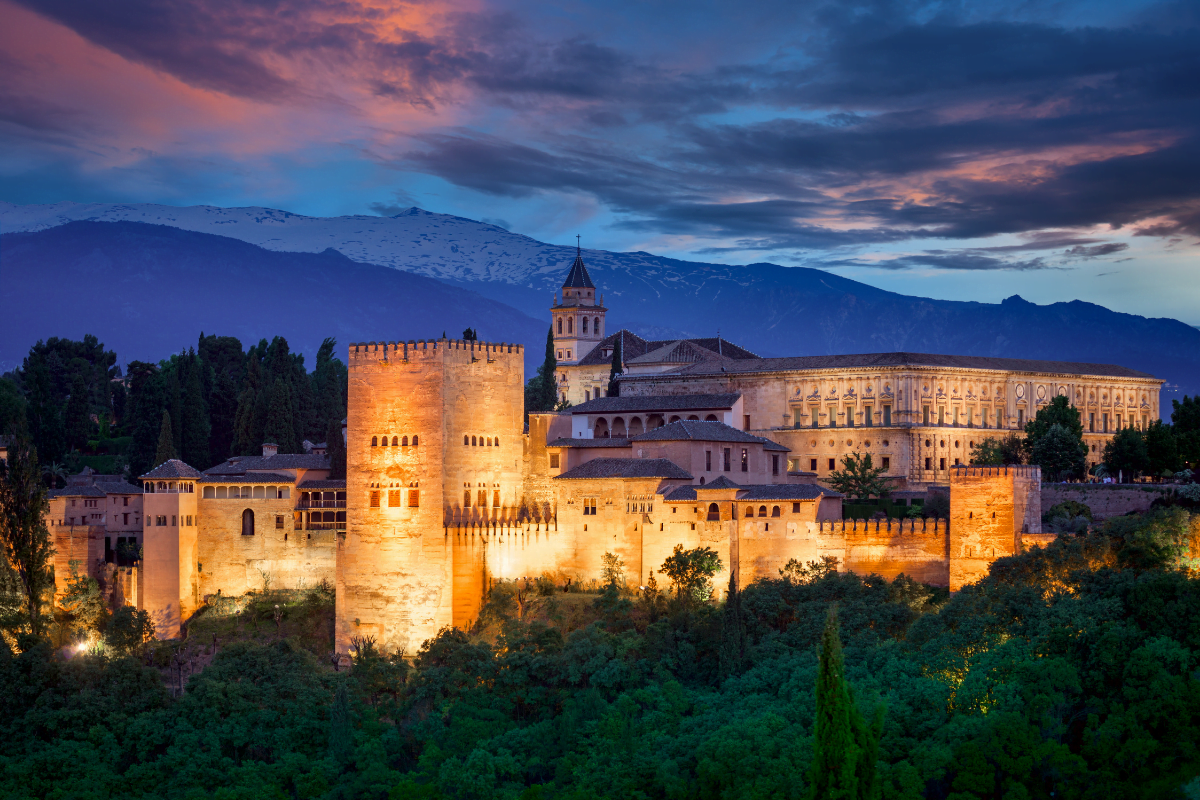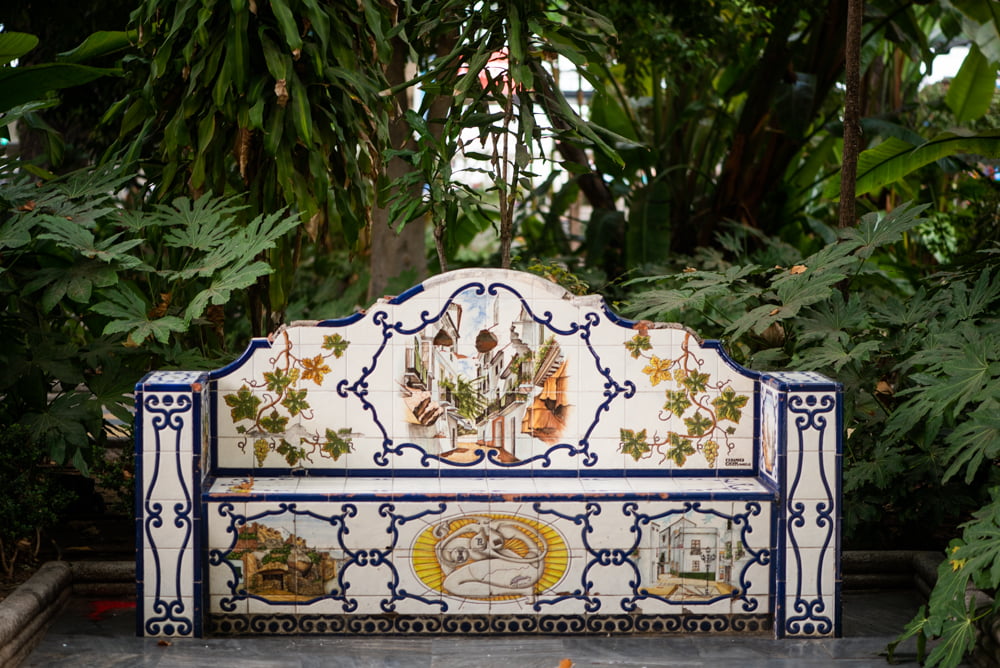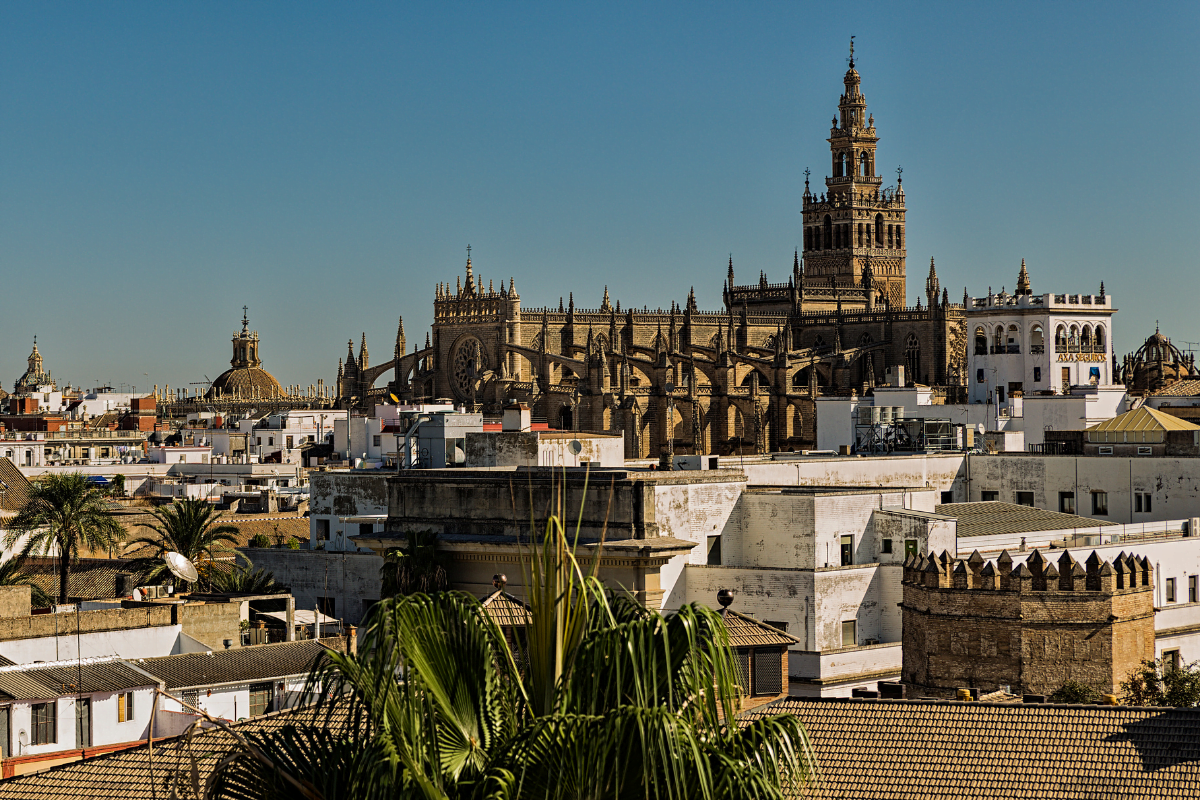Do you know why the palace-fortress Alhambra attracts millions of tourists every year? Today we will tell you about a style in architecture that you will see in many cities on the Iberian Peninsula. Find out how to recognise mudejar.
The architecture of those left behind
Who were the Moors? In medieval times, this was the name given to peoples living in the southern part of the Iberian Peninsula and professing Islam. Their tribes ruled this part of Spain for almost 800 years. You can read about their history here: Power and decline – the Moors in Spain And the mudejar? This is the style in which the Moors built their buildings. What distinguishes it?
Scripture ornament and lace windows
The Moors decorated walls, door or gate frames with rows of Arabic script. Over time, decorations combining rows of script with flowers and using slanted script also appeared.
Another way of decorating the walls was the use of different coloured bricks (this can be seen, for example, in the Alhambra), stripes of coloured bricks can also be seen on the walls of the minaret of La Giralda in Seville.

Mudejar is also recognisable by its characteristic windows – the celios. These are openwork panels with carved decorations that resemble braidwork. Also characteristic are windows with sharp arches that surround decorations in the form of bunches of flowers (garlands).
Vegetable mauresques
Moorings are symmetrical wall decorations in the form of floral tendrils. In the painting, a lush vine grows from a single stem, intertwining flowers, heavily stylised. Mauresques (also called arabesques) were also painted on coloured ceramic tiles. This type of ceramic decoration was invented in Malaga and was used until the end of the 15th century.
Azulejos – decorated tiles
Originally, azulejos were blue in colour(azul – blue). They were first decorated in Seville in the 12th century. Over time, more colours appeared on the surface of the tiles and they were decorated with geometric and floral motifs. Today it is one of the most recognisable features of Andalusian architecture.

The end of the Moorish era
The heyday of mudejar architecture comes in the 10th century – its greatest achievement is the mosque in Córdoba. In the 11th century, as the Christians increasingly try to retake the peninsula, the Amboravids arrive from Morocco. After them, the Nasrids take control of the Arabian principalities. This is the last Moorish dynasty in Spain. Its kings, although losing more and more influence to the Catholic kings, develop Granada and the Alhambra. The style we can still admire today in Seville influenced not only Spanish architecture, but also buildings in North Africa.

To this day, references to the Arab-Spanish style can still be found in Andalusia. The azujehos, decorating the interiors of luxury homes and restaurants on the Costa del Sol, are still fashionable. In the cities of Andalusia you can also see the later buildings, built in the 19th and at the turn of the 20th century. These were times of admiration for the Orient. Palaces, synagogues, train stations and market halls were built in the neo-Moorish style.
The beauty of Andalusia
Many people who come to the Costa del Sol, to Marbella or Malaga, want to stay here forever. It’s hard not to fall in love with the sun, the sea, the tranquillity. If you are looking for a flat to rent or a luxury villa to buy in Spain check out our property listings in Marbella.

